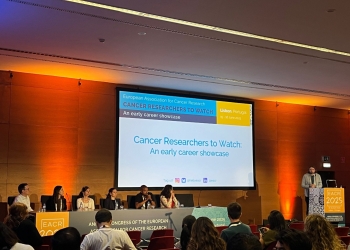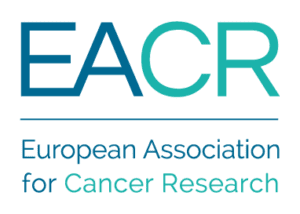The EACR’s ‘Highlights in Cancer Research’ is a regular summary of the most interesting and impactful recent papers in cancer research, curated by the Board of the European Association for Cancer Research (EACR).
The list below appears in no particular order, and the summary information has been provided by the authors unless otherwise indicated.
Use the dropdown menu or ‘Previous’ and ‘Next’ buttons to navigate the list.
Lin, J., Wang, S., Coy, S. et al. Cell. 186(2): 363-381 (2023).
doi: 10.1016/j.cell.2022.12.028.
**Summary, future impact and graphical abstract by Alexandra Boitor**
Summary of the findings
Solid tumour cancers are heterogeneous in nature and encompass immune and stromal cells in addition to tumour cells. Lin, Wang, Coy et al. used multiplexed imaging coupled with 3D tissue reconstruction, spatial statistics and machine learning in an attempt to characterise tumour composition and morphological traits of diagnostic and prognostic importance in colorectal cancer.
The authors show that the molecular state and tissue morphology change gradually within the tumour and are characterised by gradient changes in the expression of various markers such as E-cadherin, PCNA, cytokeratin 20, cytokeratin 18, and epigenetic markers such as histone acetylation and trimethylation.
The authors also show that common histopathological features, often seen as individual structures are in fact part of larger, interconnected 3D structures. For instance, 3D reconstruction of the tissue suggests that tumour buds in the invasive margin of the tumour, adjacent to normal mucosa may in fact be cross-sections through the distal tips of larger, 3D fibrillar structures characterised by a graded EMT-like transition. Similarly, the authors observed that often secondary lymph organs and tertiary lymphoid structures are interconnected forming 3D networks that can be found along the invasive front of the tumour, inside the tumour or in deeper layers.
Substantial differences in immune activity have been noticed at the invasive front of the tumour. The invasive margin adjacent to normal mucosa presents the greatest density of immune cells, although it shows strong immunosuppressive characteristics (rich in T reg and PDL1+ cells). PD1+ – PDL1+ cell interactions are enriched in proximity to the tumour buds in the stroma. The “mucinous invasive margin” is characterised by the least infiltration of immune cells, whilst the “pushing invasive margin” presented few PDL1+ cells in comparison to the invasive margin adjacent to normal mucosa but was enriched in T regs. Tumour buds are characterised by low cell proliferation whilst cell proliferation in the deep invasive margin is high. Differences in active signalling pathways have also been noticed.

Future impact
By analysing the tumour microenvironment concomitantly from morphological and signalling perspectives, this study enriches the current understanding of tumour biology in general and tumour heterogeneity in particular. The authors challenge the definition and perception of some commonly used morphological features with prognostic value and highlight the gradual changes in molecular states and morphological features within the tumour.









